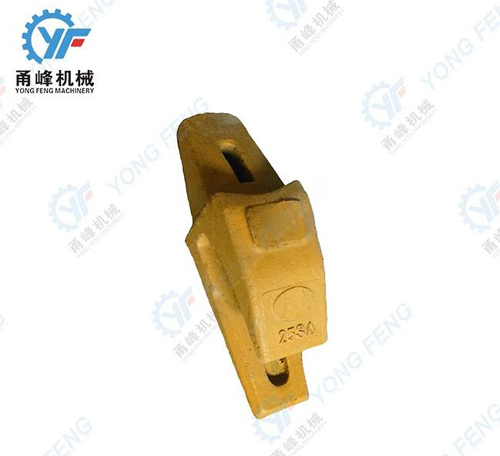Bucket teeth are the main vulnerable part of the bucket in open pit mines. The casting weight is 130kg, material is ZGMnl3, dimension is 944mm*300mm*150mm, and this kind of casting is usually produced by traditional sand casting process. EPC has many technical and economic advantages.
(1) No core, the core making process and related equipment can be omitted.
(2) No parting surface, no gap between the cores, no flying edges and burrs in the casting.
(3) The dimensional accuracy of the casting can be improved by reducing or even eliminating the starting mold slope without considering negative parting and negative cores.
(4) The foam mold is easy to bond and assemble.
(5) Good working environment and low production cost.

In order to give full play to the advantages of EPC and improve the yield rate of the process, the bucket teeth can be cast by group casting method. Adopt bottom pumping type negative pressure sand box, put 10 pieces in one box, the tip of bucket teeth are downward, parallel to each other in the sand box, and 5 pieces are put on each side of the runner. Closed pouring system is adopted, without bubble.
When pouring, the direct flow channel is firstly ordered and then poured smoothly and quickly, so that the steel always fills the sprue cup until the end of pouring. In this way, the EPS in the direct flow channel is quickly vaporized and filled with steel in a short time, which can effectively prevent the negative pressure from inhaling gas into the mold cavity and at the same time can establish a certain static pressure in the mold cavity. The pouring system, so that the steel is not easily involved in the gas and residue during the filling process, can effectively avoid defects such as porosity and residue, and at the same time can prevent wasteful castings caused by local collapse.
The castings obtained by EPC have good shape and fully meet the geometric dimensional requirements; good surface quality of castings, no burr, shrinkage, porosity and no riser; 50% reduction of cleaning and cutting workload; more than 40% increase of casting yield compared with traditional sand casting.